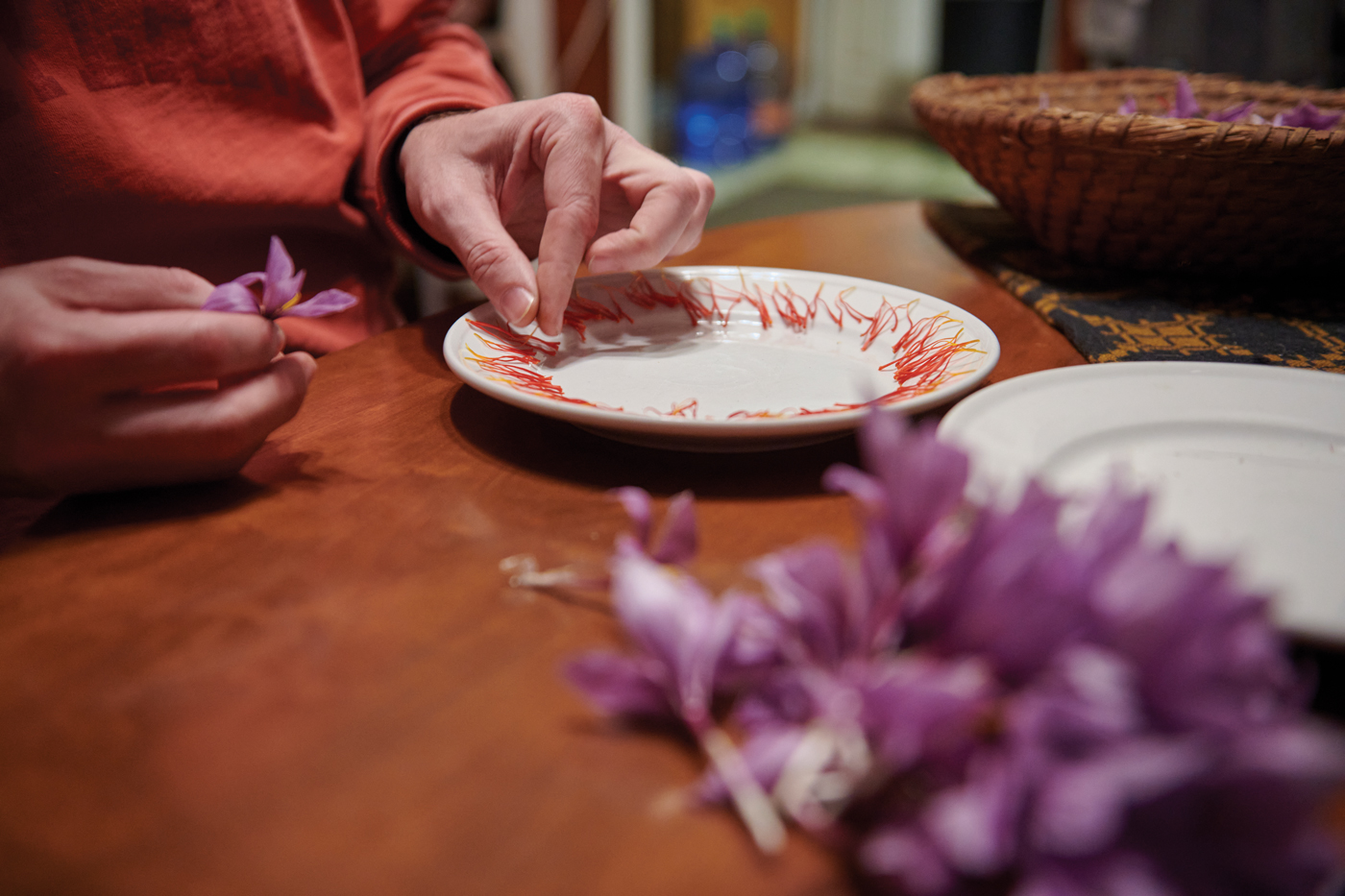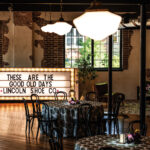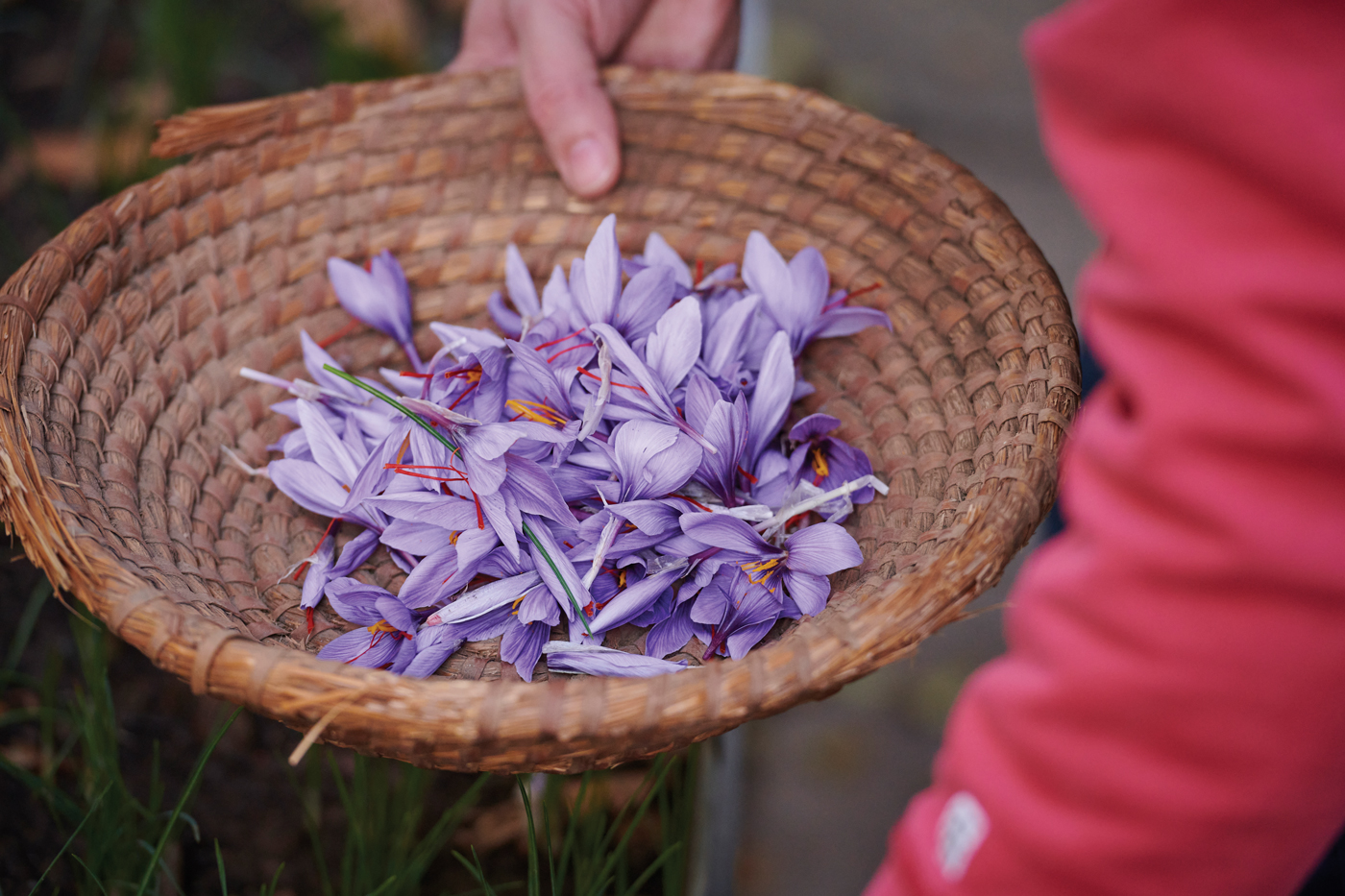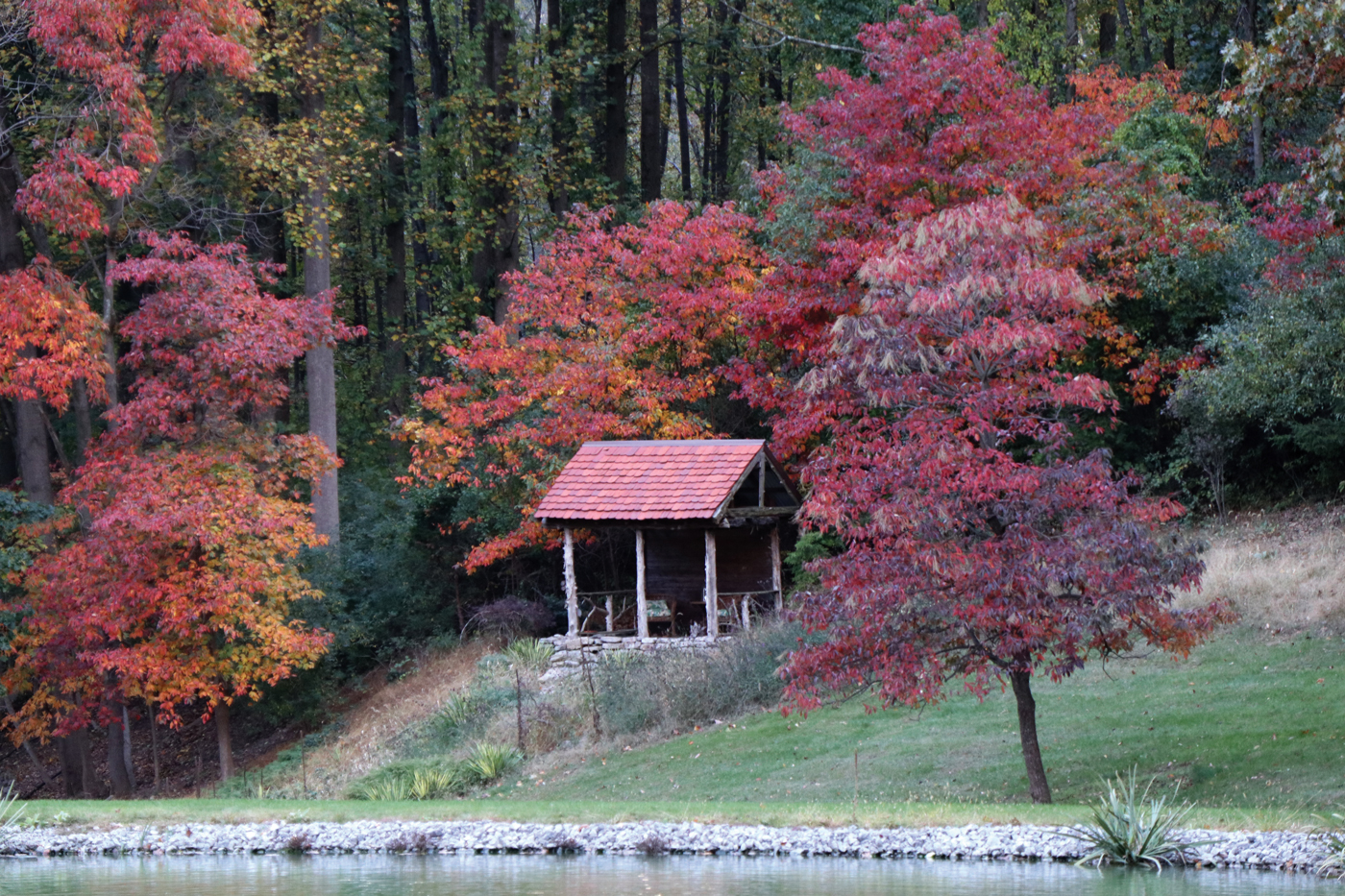No doubt, you’ve seen the small packets of saffron at the checkouts of local supermarkets and specialty stores. I would also wager a guess that you have no idea what it’s used for. As you’ll discover, saffron has been used for eons to bring an earthy flavor to food. It’s also an important ingredient in Pennsylvania Dutch recipes.

Justin Hulshizer, who grew up in the Schoeneck area, became a devotee of growing and harvesting saffron as a result of helping his grandparents with their gardens when he was a child. Here, he carefully picks the vivid-purple blooms of Crocus sativis. Saffron is ideally picked in the morning, before emerging flowers open. Once bugs and pollinators find flowers, the red stigmas (which are eventually dried) become tangled, making them harder to harvest intact. Justin’s 2022 harvest resulted in more than 30 grams of dried saffron.
A Brief History
Worth more than its weight in gold, saffron is the world’s most-treasured spice. It’s been grown across the globe for millennia, making countless cultural appearances. For example, Cleopatra, queen of Egypt, who ruled from 51-31 B.C., would bathe in saffron-infused water, thinking it would make her even more alluring. The Saffron Gatherers, a fresco that dates to 1650 B.C., depicts two young women harvesting saffron from crocus (Crocus sativus) flowers. It was painted during the Minoan civilization (Bronze Age) in the ancient city of Akrotiri, which is located on what is now known as the Greek island of Santorini. This and other frescos were discovered in the 1960s. Volcanic activity in the 1600s (B.C.) is said to have helped preserve the famed frescos.
Today, some of the leading exporters of saffron are Iran, Spain, Afghanistan, Greece and Hong Kong. A vast quantity of delicate flowers is needed to produce the spice (upwards of 150 flowers are needed to produce one gram of saffron), and the harvesting process is difficult and time-consuming. Depending on the quality and source, saffron can fetch anywhere from $15-$30 per gram. Prices ebb and flow, but saffron certainly exceeds $1,000 per kilogram.
Interestingly, it also has deep roots in Pennsylvania Dutch culture.
Deep Family Roots
Wernersville resident, Justin Hulshizer, has developed a knack for growing saffron. He credits his grandmother, Merla Shirk Hulshizer, for teaching him how to grow saffron and giving him the corms (underground plant stems that serve as storage organs for plants such as crocus to survive the winter) he continues to grow. “I grew up growing it with my grandma, so it’s always just been there. I’m 47 and I’ve been doing this since I was a little kid. My grandma and my grandfather needed help, so I would go out and farm. Then I would go in and help my grandma cook. I think that growing up three houses down from her – and in the very Pennsylvania German household that I grew up in –tradition is very important.”

Justin works in his raised beds that are modeled after the centuries-old hügelkultur method of composting.
The Shirk side of Justin’s Swiss-Mennonite family arrived in Philadelphia in 1720, and moved to Lancaster County in 1728, settling in Schoeneck. When Justin was a boy, his grandparents had a 1/4-acre garden in which they grew food and items like saffron and horseradish. Like the horseradish that’s been a family tradition for over a century, saffron serves as a link that connects Justin with his heritage – the Swiss have grown it on the southern side of the Alps for generations – and his grandmother.
Justin recalls that four neighboring houses also had saffron beds. “Now it’s dying out,” he notes. “There’s a cross-generational connection, and I think people lose their connections and that’s not a good thing. I have a computer, an iPhone, AirPods, I have all that, but in October, I sit here at my table and pick saffron as my ancestors did 200, 300 years ago. I think my kids luckily get it because they see me do it. They know it’s important. It truly was one of my grandmother’s favorite things.” He can still hear her say, “Let me show you how.”
Hügelkultur – Raised Beds
Passionate about growing saffron, Justin thrives when it comes to experimenting with soil composition and compost. With a large collection of saffron corms, he’s comfortable taking risks, testing soil compositions where he could either lose (and he has lost an entire bed of saffron) or yield healthy, large saffron corms. Saffron harvest is glorified for its colorful flowers, but Justin will tell you the key to its success is in preparing the soil.

There is a difference between corms and bulbs. Corms are solid, whereas bulbs have leafy scales. One saffron corm can produce flowers a few times each year.
At the center of his garden are two 24-foot raised beds made of repurposed, extra-thick roofing tin. One bed serves as a long-term experiment for Justin, using a centuries-old method, hügelkultur, which directly translates to “mound culture.” This raised garden bed starts with layers of carbon-dense hardwood logs, branches, leaves and even cardboard, that will compost beneath the topsoil. As the additives decay, the soil is enriched for years, improving drainage and soil fertility. Whether or not people are familiar with the term hügelkultur, the method is frequently used to help fill raised garden beds such as those popularized by companies such as Vego and Birdies.
Year-round, Justin experiments with soil amendments and compost mixes. He has a large compost bin of grass clippings and kitchen produce scraps largely for nitrogen, while wood chips, leaves and cardboard produce carbon. In the fall, Justin amends the garden beds with composted cow manure; in the winter, he adds a “heavy dose of fish emulsion fertilizer on top of the snow. The corms split in March or April, so you want to give them a boost while that’s happening.”
Justin maintains a smaller saffron bed in the front yard that serves as a nursery for smaller corms to propagate larger corms over time. “It gets the most sun,” Justin explains. “You want a wet winter, and in the summer you want thunderstorms. If it gets an inch of rain a month, it’s happy. If it gets more than that and you don’t have the right drainage, it can die.”
Growing Saffron
Saffron corms should be planted by late July or early August, set a few inches deep in loose soil. It’s worth noting that saffron corms are different from bulbs, which have a leafy exterior layer. In August, Saffron corms start growing roots and soon after, thin blades of green growth emerge. In the crisp weather, where all other plants begin to fade like the now-distant summer, spectacular purple flowers appear.
Within a flower are three, sometimes four, brilliant red strands known as stigma. The stigma, which is classified as the female part of the flower, is later harvested for drying and cooking. The golden-yellow stamen, which is the male part of the flower, is covered in pollen and is not used for cooking.

Saffron’s crocus corms propagate through an “offset,” whereby a “mother” corm produces a “daughter” cormel, causing it to grow deeper in the soil. Over time, if saffron corms are not brought back up to a higher depth, they can no longer push through the soil to the surface.
Extremely delicate and fragile, the stigma needs to be picked from the flowers by hand, made less difficult before the flower fully opens. “I prefer to pick [flowers] in the morning,” says Justin. “Pollinators will tear the flowers up. Bees go all the way [into the flower] for the pollen.” Subsequently, the stigma “gets unruly, splayed out and tangled.” Justin adds, “I’m also allergic to bees.”
A single saffron corm will flower a few times each season, “Especially when you get bigger corms,” Justin points out. There’s a finesse required, but Justin moves quickly and makes it obvious that closed, tubular rolls of flowers are much quicker for collecting saffron. “It just takes some practice,” he says. “I’ve only been doing this for 40-some years of my life.”
After frost, saffron flower production slows down, but the tops remain green all winter. In the spring, once the weather warms, the tops die off and the corms lay in wait again until September. “You have to dig them up every four years, at least, because they push down,” says Justin. The corms Justin planted in 2022 remain undisturbed for 2023.

The tedium of separating red stigmas from the purple saffron flower before drying is a time-consuming but time-honored process.
Each year, a new “daughter” or offset corm develops, splitting off the “mother” corm and pushing deeper into the earth. This daughter corm will eventually replace the mother corm, which composts in the soil now that it successfully propagated. At a four-year minimum, they should be unearthed for “separation,” dried for a couple of weeks if stored, and replanted to keep them at an ideal depth beneath a thin crust of soil. “If they get too deep, they die,” says Justin. “If they get too wet, they die. It’s a fickle plant. Do you see why most people just buy it?”
Cooking
Drying comes next, which can be done in a typical food dehydrator or on a warm counter. This year, Justin is trying an old drying method used in Afghanistan that keeps the saffron flat.

Paella cooked in a carbon-steel pan purchased at Zest! in Lititz. This tasty paella dish, which was served at the recent Taste of Lititz event, entails shrimp, chicken, chorizo sausage, short-grain rice, peas, tomato, onion, lemon, bay leaves, avocado oil … and saffron.
Once dried, saffron is ready to take its place as a traditional ingredient that’s at the heart of many Pennsylvania Dutch recipes such as chicken pot pie and chicken corn soup. It’s also a suspiciously common denominator in recipes such as Spanish paella. How each of these recipes is prepared is hotly debated based on where and who is preparing each dish. Should chicken noodle soup always contain corn? Is paella made with seafood, perhaps sausage, or as in Valencia, with rabbit, chicken and beans?
Valencia Paella
Ingredients
- 10-15 threads Spanish saffron
- 1/4 cup hot water
- 2 Tbsp. avocado oil
- 1 lb. boneless, skinless chicken thighs
- 8 oz. cured Spanish chorizo, sliced
- 3 bay leaves
- 1 Tbsp. Paella Seasoning
- 1 medium tomato, diced
- 1 medium yellow onion, diced
- 4 cups low-sodium chicken stock or broth
- 2 cups Bomba Rice
- 8 oz. frozen peas
- 8 oz small raw shrimp, peeled and deveined
- 1 lemon, sliced thin
Directions
Crush saffron threads and put them in a dish with 1/4 cup hot water to steep for about 15 minutes. In a paella pan or large flat skillet, heat the avocado oil to medium-high heat and add the chicken. After about 2-3 minutes, add the chorizo and continue cooking another 2-3 minutes. Add the Paella Seasoning, bay leaves, tomatoes and onions to the pan and cook until the onions soften, about 5-6 minutes. Add the Bomba Rice and toast, about 2-3 minutes. Add the saffron along with the water and the chicken broth, increase heat to high and bring to a boil. Cover the pan, reduce the heat to medium, and simmer for 10 minutes. Stir in the shrimp and peas and cover for 5 minutes more. Remove the bay leaves, add the lemon slices and serve
Recipe Courtesy of Zest!
Today, premade chicken pot pie and chicken corn noodle soup often include food coloring – specifically “Yellow #5 – instead of saffron. It’s faster and cheaper, saving costs while retaining an authentic-looking color, though not the other characteristics of saffron. The yellow hue and earthy essence of saffron complete dishes by providing rich color and flavor that is, without question, core to Pennsylvania Dutch cooking. Conversely, “Too much saffron will taste like metallic honey, which is not a good thing,” says Justin.
One of his favorite saffron-inclusive recipes that is kept close to the vest, is stuffing. “I can’t have stuffing without it. It’s not Thanksgiving without saffron,” says Justin. The recipe comes from “the Bowman side of the family and it’s made with saffron and milk,” he says. “It’s easily distinguishable. Sometimes I’ll add oysters.”
Growing saffron at home is a cost-effective way to spice up your cooking with authentic flavors, skipping the Yellow #5 food coloring, while getting time in the garden. Watching vibrant flowers emerge as nature prepares for winter is a delightful juxtaposition. There are pockets of saffron grown throughout Lancaster County, but finding it can be tricky. Saffron corms can be purchased at farm stands and local hardware stores (such as Agway in Lincoln along Route 322) in mid-summer.
Wrapped in a Saffron Blanket
While there is no more valuable herb on earth by weight, the flower petals are less desirable and are seldom used in jam or tea. For Justin, however, the petals are treasured perhaps above all else. Collecting baskets of stunning purple flowers has become an annual rite that sees him beautify his grandmother’s gravesite with a blanket of saffron petals. “I keep them in a bag. For a while, I didn’t tell anyone, I just went and did it. I didn’t even tell Louise [his wife] or anybody; it was something I did for my grandma. Well, my aunt saw it. She drove by the cemetery and asked herself, ‘What is this? Did someone lay a blanket [down]?’”
“It’ll cover the whole grave and it looks like a purple blanket,” Justin elaborates. “One year I had thousands, I mean thousands. [Her gravesite] was purple. That’s when my secret got out. That’s just what I do for my grandma. It truly was one of my grandmother’s favorite things,” he says of growing saffron.
































































